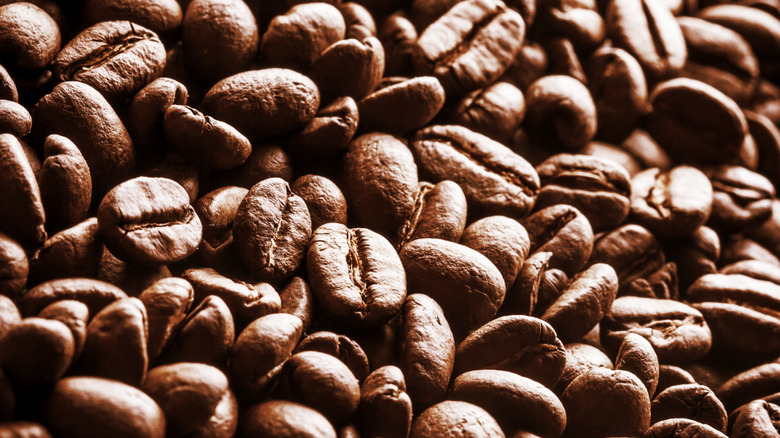The Aldi Coffee Blend That Has The Most Caffeine
Aldi is the fastest-growing grocer in the United States, buoyed by cult-favorite store-brand items and low prices. If you're a recent Aldi convert, you might find yourself wondering how its products compare to familiar brands. How do you know if Aldi's coffee will offer you the same buzz as your former go-to blend?
Some brands disclose caffeine content, but Aldi doesn't. When The Takeout reached out to Aldi for a statement, the retailer remained relatively tight-lipped. "Different coffee roasts have different levels of caffeine," Aldi explained. "While dark roasts tend to have the strongest flavor, they typically contain less caffeine than lighter roasts."
It's true that roast plays a role in caffeine content, but it's not the only factor; how you make the coffee has a bigger impact. Aldi currently carries only one light-roast coffee, the Fair Trade Organic Guatemalan Light Roast. The coffee comes in pods, though, and coffee made with pods tends to have less caffeine than other methods, so it's possible the pods actually cancel out the extra caffeine kick.
In truth, the roast makes relatively little difference. Light roast coffee beans only have more caffeine if you measure by volume. If you measure by weight, they're pretty similar. Since Aldi sells all of its whole beans in 12-ounce bags, your caffeine-per-bag ratio should be pretty much the same regardless of the roast.
Understanding coffee caffeine content
The brewing method you use affects the size of the grounds, the length of time water is in contact with the coffee, and the temperature of the water. All those factors, in turn, affect caffeine extraction. Caffeine content varies wildly: Your average 8-ounce cup of coffee typically contains somewhere between 95 and 200 milligrams of caffeine. Single-serve coffee makers, like Keurig, typically produce coffee with a caffeine content somewhere between 75 and 150 mg. But since water moves through the machines at a faster pace than traditional drip coffee, there isn't much time to extract the caffeine.
While espresso has the highest concentration of caffeine, a single shot of espresso typically contains less than a cup of brewed coffee. Pour-over coffee uses hotter water than drip, so the caffeine content per cup tends to be higher. Cold brew coffee tends to have a lot of caffeine, but you'll need to use a lot of grounds — and wait a long time — to get the full effect. Even the way you drink the coffee has an impact. Chugging down a cup of coffee on an empty stomach is bound to give you a powerful buzz, for example.
The bottom line? It's hard to say which Aldi coffee blend has the most caffeine since the grocer isn't keen to share those details. If you want to max out your buzz, pick one of the brand's many medium-roast blends and choose your brewing method wisely. Maybe it's finally time to perfect your pour over technique.

